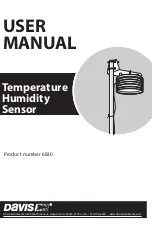
DKG-325 User Manual Firmware V-56
- 16 -
Term Function
Technical data
Description
1
MAINS NEUTRAL
Input, 0-250V-AC
Neutral terminal for the mains phases.
2
MAINS-L1
Mains phase inputs,
0-250V-AC
Connect the mains phases to these inputs.
The mains voltages upper and lower limits
are programmable.
Mains inputs must be protected by fuses.
Fuse rating must be max 25A
3
MAINS-L2
4
MAINS-L3
5
LOAD L3
AC Load supply
output, 25A-AC max.
Supply the load from these outputs. The
maximum output current rating is 25A per
phase.
6
LOAD L2
7
LOAD L1
8
GENSET-L1
Genset phase inputs,
0-250V-AC
Connect the genset phases to these
inputs. The genset voltages upper and
lower limits are programmable.
9
GENSET-L2
10
GENSET-L3
Term Function
Technical data
Description
11
OIL PRESSURE SENDER
Resistor measuring
input,
0-5000 ohms
Connect to the oil pressure sender.
Do not connect the sender to other
devices. The input is programmable in
order to use to any sender type.
12
COOLANT TEMP. SENDER
Connect to the coolant temperature
sender. Do not connect the sender to
other devices. The input is programmable
in order to use to any sender type.
13
LOW OIL PRESSURE
SWITCH
Digital Inputs,
0-30Vdc
Connect to the low oil pressure switch to
this terminal.
14
HIGH TEMP SWITCH
Connect to the high temperature switch to
this terminal.
15
SPARE FAULT INPUT
The priority level of this input is adjustable.
16
CHARGE
Input and output
Connect the charge alternator’s D+/WL
terminal to this terminal. This terminal will
supply the excitation current and measure
the voltage of the charge alternator.
17
AUXILIARY RELAY
OUTPUT
10A-DC/16V-DC
This relay has programmable function,
selectable from a list. Factory set as
ALARM
output.
18
BATTERY NEGATIVE
O VDC
Power supply negative connection.
Term Function
Technical data
Description
19
BATTERY POSITIVE
+12 V-DC
The positive terminal of the DC Supply.
20
DIGITAL OUTPUT 1
Relay Outputs
40A/12V-DC
CRANK
output, capable of driving the
starter motor directly.
21
DIGITAL OUTPUT 2
FUEL
output, capable of driving the FUEL
solenoid directly.
Drawing excessive current from load outputs may
damage the unit.
5. TERMINAL DESCRIPTION
















































